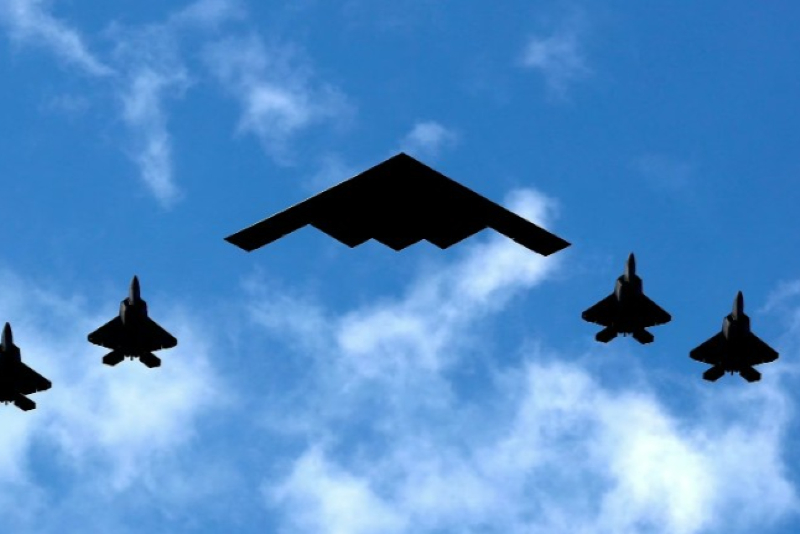US B-2 Stealth Bombers head towards Pacific amid Iran-Israel conflict

Several U.S. Air Force B-2 stealth bombers were observed flying westward across the Pacific on Saturday, amid heightened tensions over Iran’s nuclear program.
Their departure from Whiteman Air Force Base in Missouri comes as President Donald Trump prepares to return to Washington from his Bedminster, New Jersey golf resort to consult with national security officials regarding possible military intervention alongside Israel.
The aircraft are believed to be heading toward Guam, a strategic U.S. territory with key military facilities, although this destination has not been officially confirmed.
The B-2s—capable of carrying powerful 30,000-pound bunker-buster bombs suitable for targeting Iran’s fortified nuclear facilities in Fordo—were accompanied by aerial refueling tankers during the journey, according to online flight tracking data.
While the movement of military assets does not confirm a decision to strike, such repositioning is often done to ensure strategic readiness, allowing the president and commanders flexibility in rapidly evolving situations.
President Trump is expected to meet with his national security team on Saturday at 6 p.m., followed by further deliberations on Sunday.
The White House, however, has refrained from commenting on the matter. Traditionally, the president spends weekends at his private properties, but the current situation has prompted a change in routine.
Trump has repeatedly stated his commitment to preventing Iran from acquiring nuclear weapons, and his administration has been exploring options for several months.
Despite these efforts, Iranian leaders have rejected proposals to cease uranium enrichment activities within Iran.
Frustration within the administration has grown, especially after U.S. intelligence determined that Israeli Prime Minister Benjamin Netanyahu intended to move forward with strikes on Iran regardless of American support.
Israel initiated airstrikes on June 12, targeting senior Iranian military figures and triggering retaliatory attacks on Israeli territory. As the conflict escalates, the U.S. faces a critical decision: whether to join Israel in a potentially decisive attack on Iran’s nuclear infrastructure or avoid entanglement in another prolonged Middle Eastern conflict, which Trump campaigned against in both 2016 and 2024.
The president appears to be balancing both options. “Within two weeks,” Trump said Friday, referring to his decision timeline, explaining that the delay was “just time to see whether or not people come to their senses.”
White House Press Secretary Karoline Leavitt earlier this week confirmed the president’s two-week window for a final decision, leaving room for renewed diplomatic efforts.



